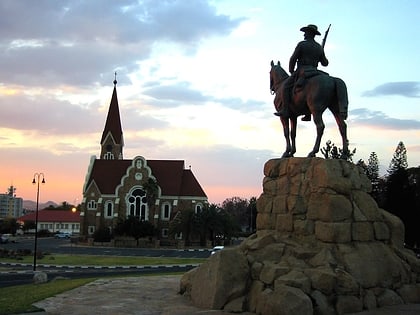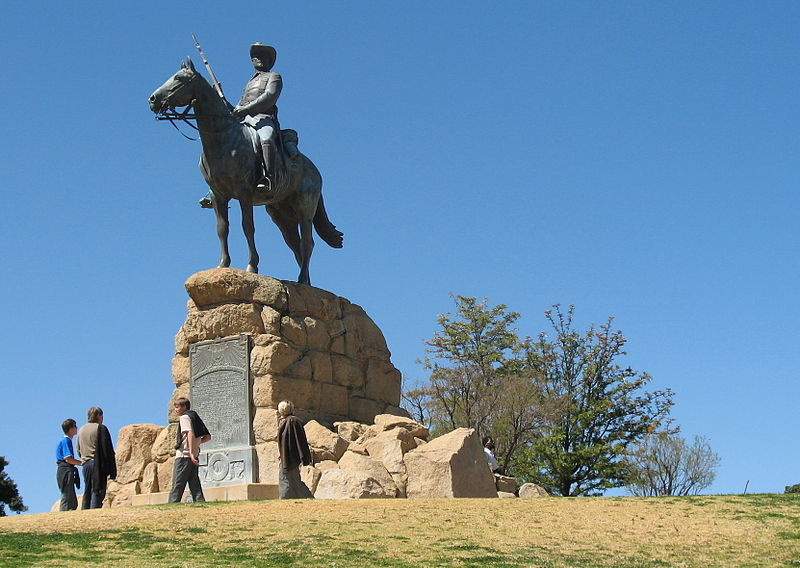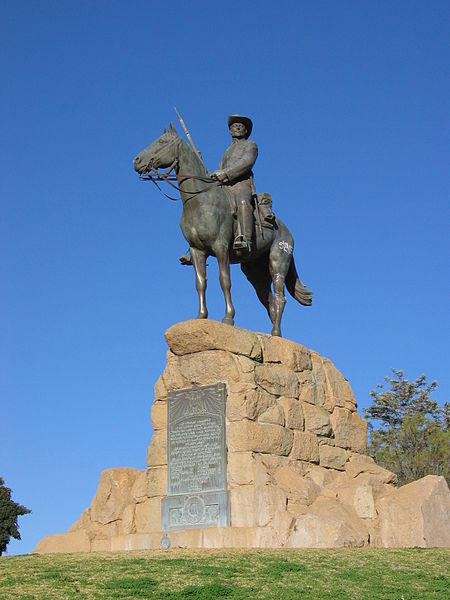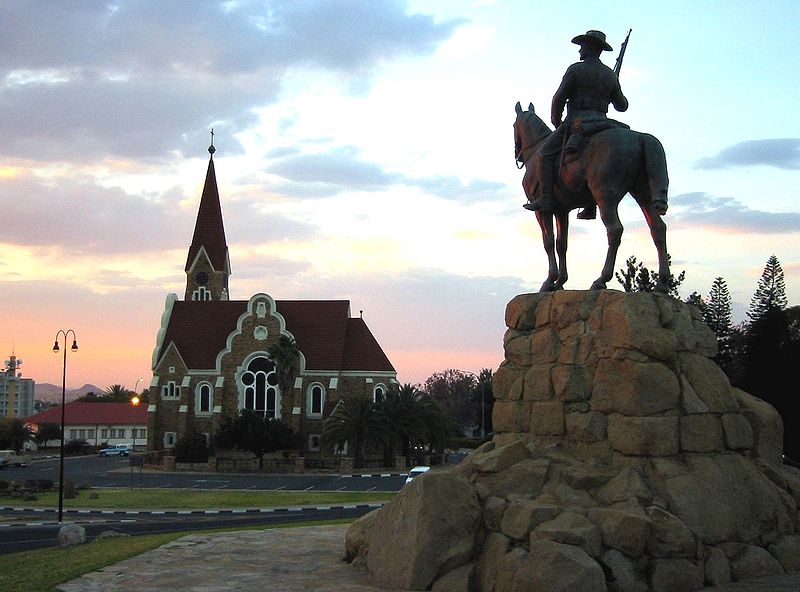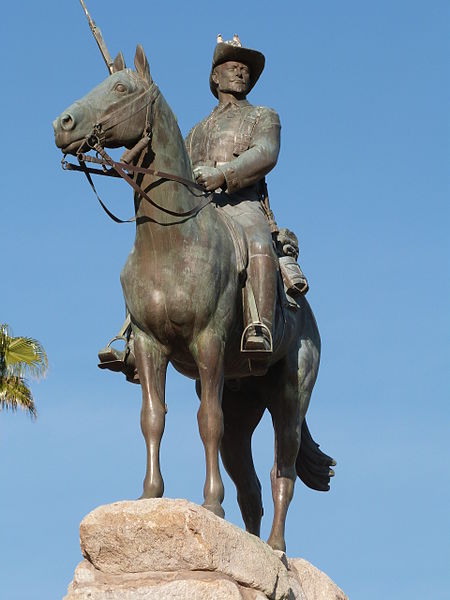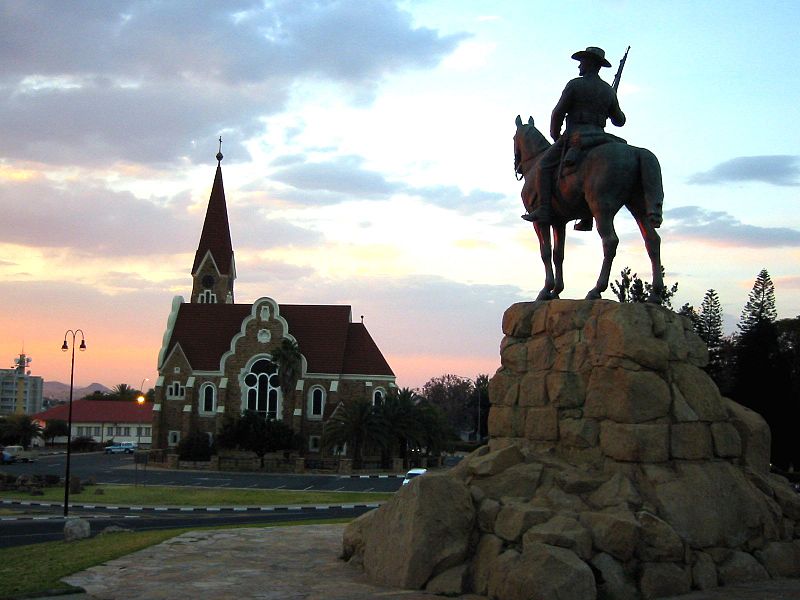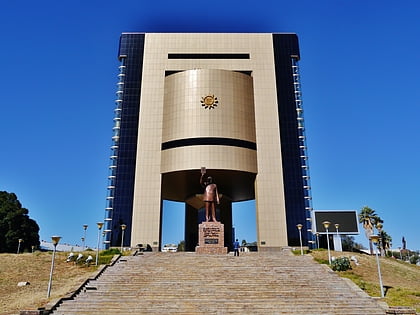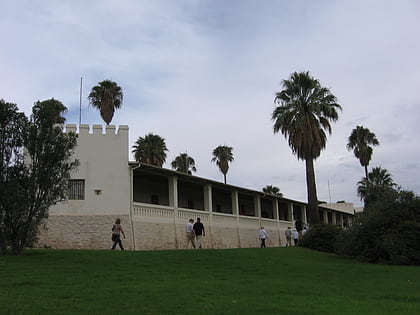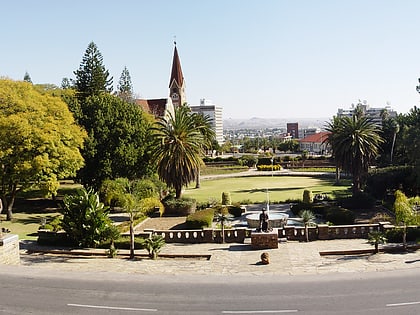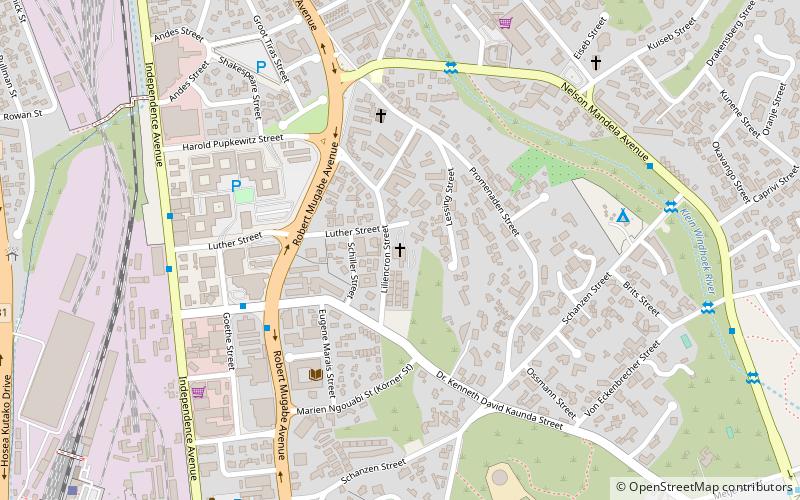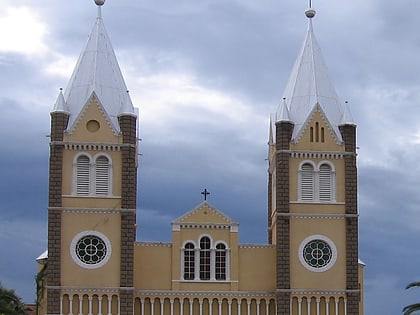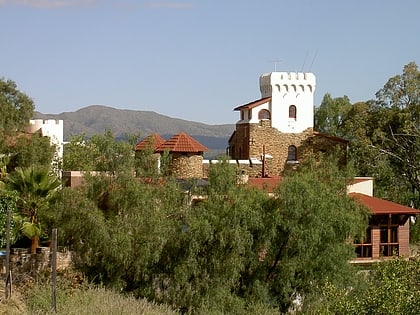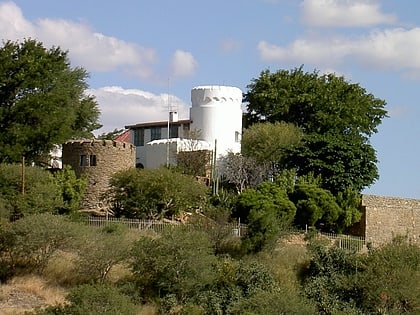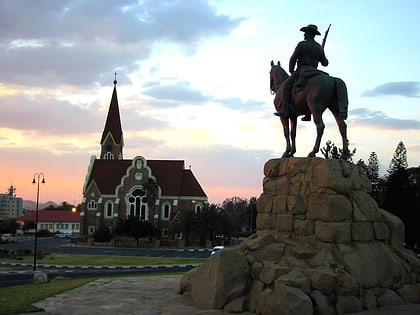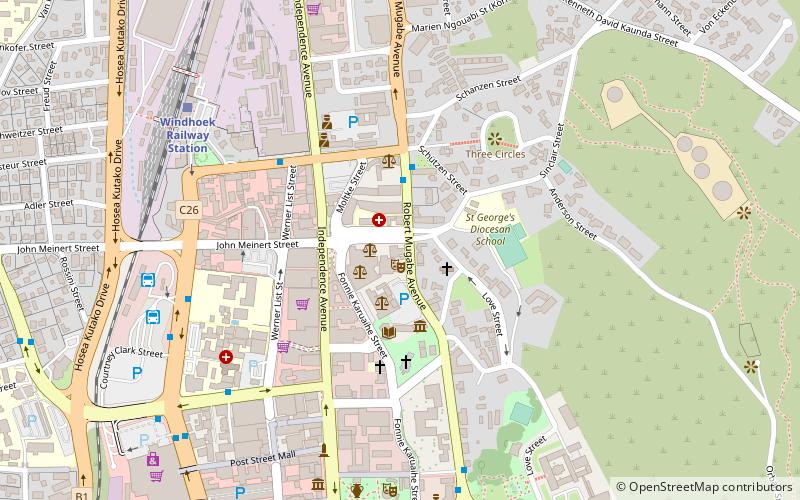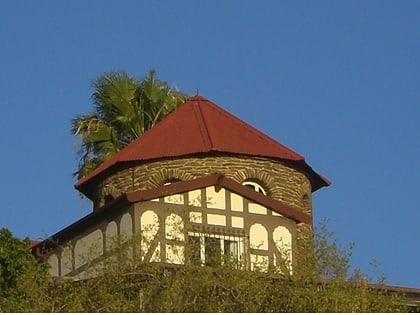Reiterdenkmal, Windhoek
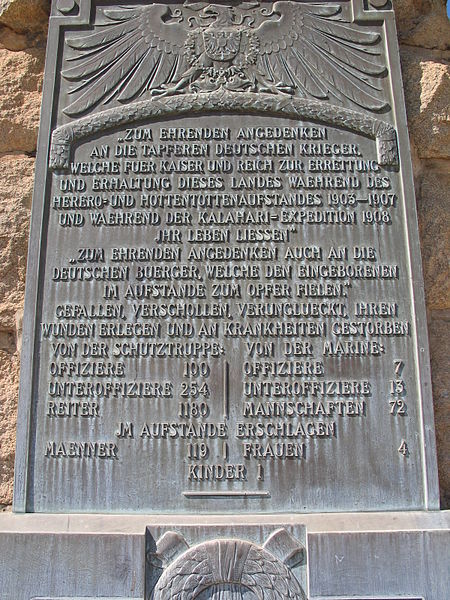
Facts and practical information
The Reiterdenkmal, also known as the Equestrian Monument, is a historical statue located in the heart of Windhoek, the capital city of Namibia. This iconic sculpture was originally erected to commemorate the German soldiers and settlers who lost their lives during the colonial era, specifically in the wars against the Herero and Namaqua peoples.
First unveiled in 1912, the Reiterdenkmal has stood as a significant, albeit controversial, landmark in Namibian history. The statue features a German Schutztruppe (colonial soldier) on horseback, symbolizing the military presence and power of the German Empire in what was then known as German South West Africa.
For many years, the Reiterdenkmal held a prominent position in front of the old fort, the Alte Feste, which is one of Windhoek's oldest buildings. However, due to its representation of colonial dominance and the painful history associated with it, the monument's presence has sparked debate and led to calls for its removal.
In December 2013, the statue was removed from its original location and was planned to be relocated to a less central position within the confines of the Alte Feste museum. This decision was part of a broader effort to decolonize public spaces in Namibia and to foster a national identity that reflects the country's diverse history and population.
Windhoek
Reiterdenkmal – popular in the area (distance from the attraction)
Nearby attractions include: Maerua Mall, Independence Memorial Museum, Alte Feste, Parliament Gardens.
Frequently Asked Questions (FAQ)
Which popular attractions are close to Reiterdenkmal?
How to get to Reiterdenkmal by public transport?
Bus
- WHS / Robert Mugabe • Lines: 5 (5 min walk)
- Parliament Gardens • Lines: 2 (5 min walk)
Train
- Windhoek Railway Station (21 min walk)
- Gammams (30 min walk)
